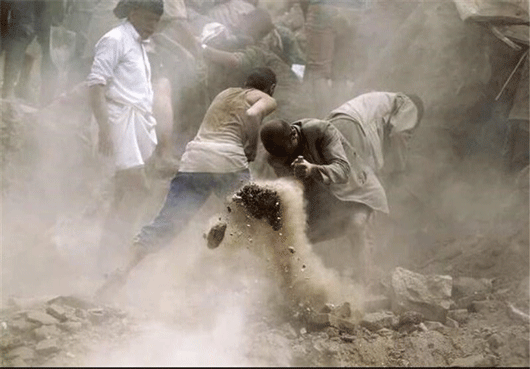
By Darius
In a few days, we’re coming up on the one-year anniversary of the Saudi-led coalition’s intervention in Yemen. Saudi Arabia and other Gulf states intervened to prevent a complete takeover of the country by the Houthis.... Here’s a roundup of what the intervention has accomplished so far.
• By the end of last year, according to the United Nations, nearly 2,800 Yemeni civilians had been killed and another 5,000 wounded, by a combination of Saudi airstrikes and ... shelling. Despite several attempts at a ceasefire, civilian casualties have continued to mount, largely thanks to policies such as the Saudi decision to declare the entire province of Saada, a Houthi stronghold in Yemen’s north along the Saudi border, to be a free-fire zone.
• Yemen is in the midst of a massive humanitarian crisis, with a majority of the population facing insecurity and shortages of food, water, and medicine. The crisis was brought on by the Saudi-led coalition’s decision to impose a total blockade on Yemen, supposedly to intercept Iranian weapons bound for the Houthis. After major international outcry, the blockade has been partially lifted, but the situation for millions of Yemenis remains dire.
• Fighting continues between myriad groups, including the internationally recognized Yemeni government, backed by the Saudis, southern tribes aligned with the Yemeni government, the Houthi government in the capital, Sana’a, fighters... aligned with the Houthis, former members of the Yemeni military loyal to the former president..., Ali Abdullah Saleh..., various local defense groups, and al-Qaeda in the Arabian Peninsula. The sheer number of armed groups involved makes the prospect of a negotiated settlement difficult, though an agreement between the Houthis and the government would likely end most of the fighting.
• Al-Qaeda in the Arabian Peninsula has dramatically expanded amidst the chaos, taking the port of al-Mukalla, Yemen’s fourth-largest city, several months ago. AQAP has particularly expanded in Yemen’s poor, sparsely populated southeast. No matter who prevails in the conflict between the government and the Houthis, AQAP has been reinvigorated and will remain a powerful and deadly force in Yemen.
• Yemen’s cities and cultural heritage, including UNESCO World Heritage sites, have been devastated by the fighting. Saudi airstrikes have leveled much of the capital, Sana’a, and Saada, the largest city in the far north, while heavy fighting has destroyed much of Taiz, Yemen’s third largest city, and Aden, the de facto capital of the south and seat of the Hadi-government... . Even if the fighting stops now, most of Yemen will need to be rebuilt.
• The US has spent $86 million (!) in helping the Saudis acquire targeting intelligence for their airstrikes and in refueling Saudi planes.
• ISIS has appeared in Yemen, carrying out several major suicide attacks in Aden.
Yemen and its people are worse off in every way than they were a year ago, and the region is less stable, not more stable. To paraphrase Dave Barry, at the cost of several thousand dead civilians, Saudi Arabia has transformed Yemen from a poor, unstable country whose inhabitants hate each other into a poor, unstable country whose inhabitants really hate each other. Good job.
Sources: Not What You Might Think, Edited by Website Team